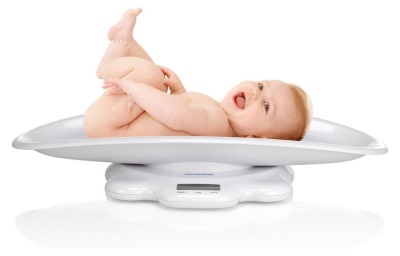How to understand if breast milk is enough for a baby?
Mom always wants the best for her crumb, so it’s not a rarity to have enough milk for the baby. This question arises in almost all moms, even if the baby looks full and healthy, but, of course, most often it appears in mothers of restless and often crying babies. Due to the lack of milk, a baby may not receive enough substances that are valuable for its development, so it’s very important to make sure that the baby gets enough food.
Signs of
The main criterion that the child gets enough milk - it is well developed and calm. If the crumb after feeding independently releases her mother's breast, is in a good mood, then awake for a while and falls asleep, waking up to get another batch of food, then there is enough milk for the baby.
Other signs of sufficient intake of breast milk for an infant are:
- The frequency of urine at least 10-12 times a day.
- The chair of the baby in its consistency is similar to gruel, homogeneous, it can be up to 6-8 times per day, an acidic smell.
- Normal weight gain (500 grams per month or more), as well as growth.
- The baby’s skin is pink and clear.
- The eyes sparkle, and when the baby cries, tears stand out from the eyes.
- Baby develops according to the terms.
"Cheating" criteria
There are signs that moms can be perceived as evidence of insufficient lactation, but they are not criteria for milk sufficiency for an infant:
- If the mother does not feel the tides of milk, it does not mean that the milk began to arrive in the breast glands less. Such sensations are individual and very often the milk arrives at the exact moment when the baby eats.
- If the baby sucks for a very long time or asks for the breast often, this does not at all confirm the suspicion of the mother that he has little milk. Sucking the breast for a newborn is not only a way to satisfy hunger or drink, but also a means for calming down, acquiring a sense of security, communicating with mom. In addition, with colic or cutting teeth, babies usually “hang” on mother's breast for a very long time.
- Anxiety in the infant between feedings, as well as during meals, does not necessarily indicate hunger. Often the baby is suffering from colic or other unpleasant symptoms.
- If the mother does not get a large amount of milk, it does not indicate insufficient lactation. The baby, which is applied to the breast correctly, sucks a lot more valuable drinking than mom when pumping.
- The appearance of the expressed milk is not an important criterion. He can not tell about the fat content of milk, nor about its nutritional value. Read more in our article about what breast milk looks like and how does it taste.
Signs of shortage
About the lack of food intake in the body of the baby will tell you:
- Bad weight gain.
- A small amount of urination. Up to 5-6 "pips" by day and half-empty diapers after a night's sleep should alert mom.
- The long duration of feeding, and the child remains after them dissatisfied and capricious.
- The baby rarely poops, but it has no symptoms of constipation.
How to determine how much milk the baby drank?
To do this, you can conduct a control feeding. First, the child is weighed before he is given a breast. After feeding the baby from the breast, the baby is weighed again. The difference in weight will be equal to the amount of milk that the baby sucked from the breast. It is necessary to carry out similar feedings with weighings a little as the child can suck different quantities of milk in different feedings. Next, determine the average amount of sucked milk at a time. Multiplying the resulting number by the number of feedings, you get the daily volume of milk received by the child. You can also weigh the baby after each feeding during the day and summarize the data.
Consumption rates
The daily rate of milk consumed for a child during the first four months of life is a volume equal to 1/5 of his body weight. For example, if a baby weighs 4500 g, then to determine the daily rate of milk, you need to divide its weight by 5, and it turns out that 900 ml of milk per day will be the norm for the crumbs.
At the same time, one should not forget about the individual differences of babies. A child up to six months can drink 700-1200 ml of milk per day. Someone eats less than the calculated norm, but adds weight and develops well. So the main criteria should remain the state of health, as well as the pace of development of the baby. If the child is healthy and develops correctly, then you should not worry.













